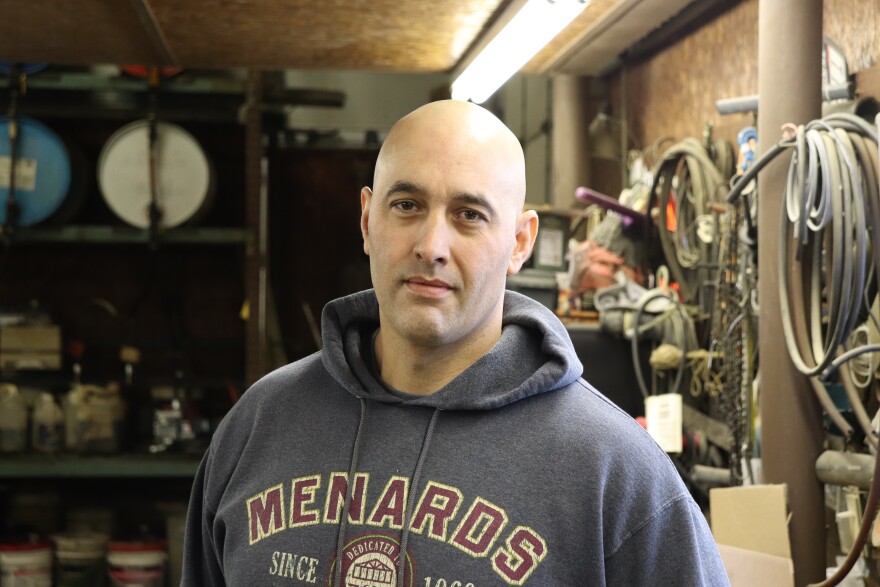This week, President Donald Trump signed Phase One of a new trade agreement with China. The move represents a kind of truce between the world’s two largest economies after two years of escalating tariffs.
In Ohio, many are hoping the deal’s agricultural provisions will spell relief for an industry reeling from a year of bad weather and declining demand.
At the White House on Wednesday, Trump held court, touting the new trade deal’s terms and savoring a long-sought achievement for his administration.
The U.S. is calling off one set of tariffs, and lowering another group from 15% to 7.5%. Meanwhile, China will take steps to defend intellectual property, and relent on onerous technology requirements imposed on foreign firms doing business there.
The country is also committing to purchase $200 billion of additional American goods and services over the next two years. Agriculture represents almost half of that.
“They say, 'Sir, our farmers can’t produce that much,'” Trump said at Wednesday’s ceremony. “I said I love our farmers, let them tell me they can’t do it, tell them to go out and buy a larger tractor, buy a little a more land, but they’ll be able to do it, I have no doubt they’ll be able to do it.”
Ian Sheldon, an agricultural economist at Ohio State, notes that $40 billion in ag exports by the end of the year represents a major jump for U.S. output.
“If China meets those commitments, that is a significant increase in our exports to China,” he says. “Our exports have never been above $29 billion, before the trade they were around about $24 billion, so we’re talking about almost a doubling of our exports in a one- to two-year period.”

In Delaware County, Ryan Rhoades is taking a wait-and-see approach.
“You know, I tend to be probably more optimistic than some, but yeah, the market was down today, and yesterday the announcement was made,” Rhoades says. “The beans were down 13 cents, so you’re kind of wondering well, what am I not seeing?”
Rhoades serves as president of the Ohio Soybean Association, and he farms a little over 3,000 acres with his dad. He sees the trade deal as an important first step, and although the agricultural benchmarks are high, Rhoades believes there won’t be a problem on the supply side.
“That’s what U.S. farmers are here for. We do it better than anybody else in the world, and I can’t say that any deeper in my heart than that, we are here to produce,” Rhoades says. “Let us produce, let us grow a good quality product—best in the world—and we’ll find a home for it.”
State Sen. Matt Huffman (R-Lima) was on hand for the signing ceremony along with two Republican U.S. Senators. Although he represents a heavily Republican district, Huffman acknowledges the trade war hurt the bottom line for many of those constituents.
“But essentially this, as they call it, Phase One Agreement removes much of that,” Huffman explained. “And so this is going to solve the problems that a lot of my constituents have been talking about over the last couple of years.”
With an election around the corner, Huffman said the deal only works to the president’s advantage.
“I don’t think that there’s going to be a whole lot of change in the number of people who are going to vote for Donald Trump in my district. In the state of Ohio, I think it’s going to be significant,” Huffman said. “Now, I think he was probably going to win Ohio anyway, but I think there will be some people who say this was a very, very good deal.”
That said, Sheldon cautions not to forget the tariffs on $250 billion of Chinese goods that are staying in place. Those duties are paid by American buyers.
“There are studies coming out and most of them are showing pretty much the same thing, that either American firms or American consumers have borne most of the cost of those tariffs,” Sheldon says. “And the IMF and others have suggested maybe 1% has been knocked off U.S. GDP growth.”
Wednesday’s trade deal also doesn’t touch the Chinese government’s efforts to subsidize its domestic industries. These interventions allow Chinese producers to undercut others on the international market, and were cited by the president as the chief reason for imposing tariffs.
Tackling those subsidies has been left for phase two of trade negotiations. The Trump administration has pushed the deadline for that deal past the 2020 election.





